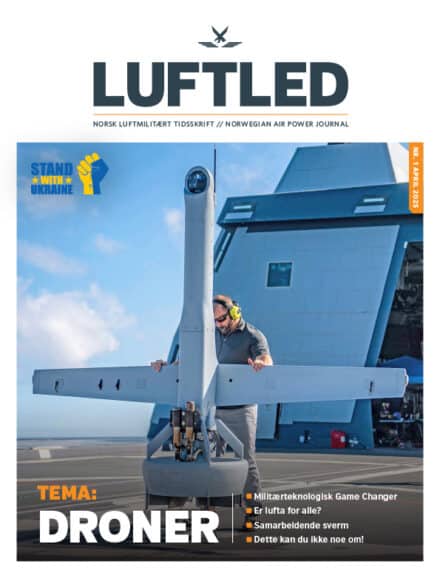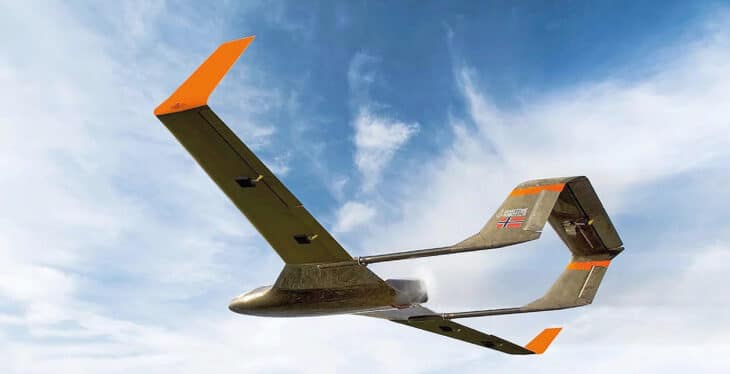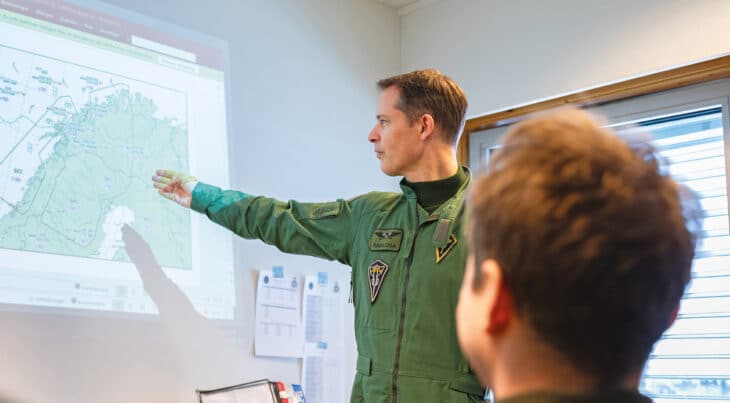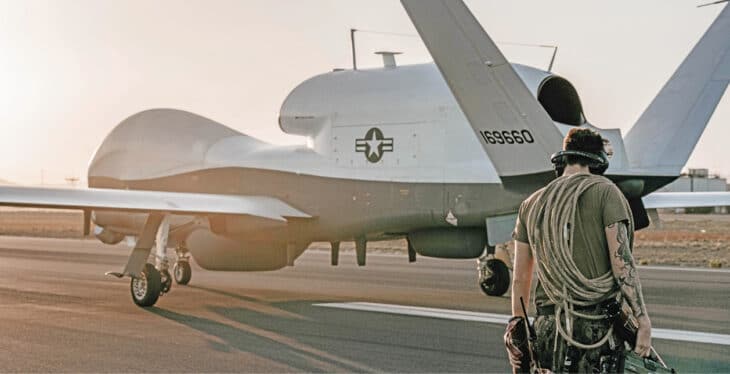Surveilling uncertainty: Future Danish UAV capabilities in the Arctic
In 2021, the Danish government announced a new Arctic defense plan, focused on providing critical surveillance and patrol capabilities to its Arctic territories. This was the result of increased American pressure to seriously upgrade Danish capabilities in the region, to help check the Russian and Chinese presence in the region.
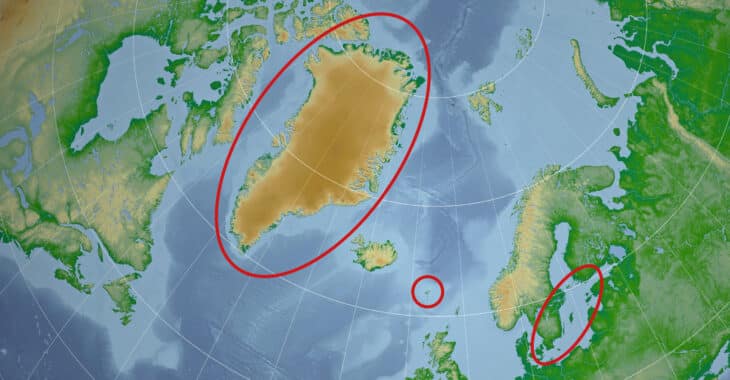
Successive Danish governments pledged to purchase 2, and now 4 advanced Medium Altitude Long Endurance UAV’s, build advanced radar-systems on the Faroe Islands and increase Denmark’s naval forces in the region. 4 years later, none of the pledged capabilities have materialized.1 With Trump proposing an American annexation of Greenland, and several Greenlandic parties calling for independence, Denmark increased the speed and scope it’s military plans. It now stands on the cusp of acquiring 4 MALE UAVs, which will most likely be four MQ-9B SeaGuardians, though these new UAVs are set to be launched into an unpredictable future.
This article looks to explore the reasons behind the acquisition of the coming new Danish UAVs, focusing on the political, operational and technical reasons orienting Denmark towards the SeaGuardians, as well as the risks and challenges associated with utilizing these new capabilities.
Acquiring Danish UAV capabilities in the Arctic
Increasing American concerns over security in the Arctic has seen the US calling for a stronger Danish military presence in the region.2 Heeding these calls, Denmark promised upgrades of its capabilities in the region. Specifically, Denmark aimed at spending 1,5 billion DKK (2,33 BNOK), with the majority going to establishing a long-range early warning radar system on the Faroe Isles for 390 million DKK (606MNOK) and buying an Arctic surveillance capacity package consisting of 2 UAVs for 750 million DKK (1.165 MNOK).3 The process of acquiring the drones was plagued by a bureaucratic process, with the acquisition being cancelled in late 2023, as Danish budgeting miscalculated the cost of the drones. Factoring in establishment and operating expenses, the new costs of the entire Artic package turned out to be approximately 3,9 billion DKK (6,06BNOK), leading to a drop of the purchase.4 Still committed to ensuring Arctic surveillance, 2024 saw Denmark reviving the initiative, expanding the drone package to 2,7 billion DKK (4,2BNOK).5
To that end, the Danish government announced an expanded capability plan on the 27th of January 2025, aiming to spend 14,3 billion DKK (22,22BNOK) on three new Arctic frigates, the planned-for radar system and four new UAVs.6 Current news point to Denmark acquiring four of General Atomics’ MQ-9B SeaGuardian drones and operating them out of Aalborg Airport and Kangerlussuaq on Greenland when necessary.7 These are large MALE models, equipped with maritime surface search radar, detect and avoid systems, electro-optical/infrared cameras, lightning and anti-ice protection, as well as maximum performance of 12.2 kms in altitude, 30+ hours in operational endurance, 398 km pr. hour in speed, and a range of 5,000 nautical miles.8
In short, if the enemy can spot and fire on a MALE drone, it is more likely to be neutralized than not
Building an Arctic capability plan and mustering more resources into the region serves triple purposes for Denmark. Firstly, it demonstrates a Danish commitment to defending Greenland and the Faroe Islands, showing that it has the capacity to effectively patrol and protect its waters.9 Secondly, it helps to demonstrate defense commitment to key allies. With the US openly discussing an annexation or ‘purchase’ of Greenland,10 the investments help to underline both the Danish will and capability to defend its Arctic territories. Thirdly, it builds up deterrence against further Russian encroachment in the region.
The prime mover for acquiring the UAVs was undoubtedly the increased American focus on conflict in, about and around the Arctic,11 but securing the UAV capacity to provide security and surveillance in the Arctic has also been a question of defining specific operational needs and technical demands. The next sections will explore these in detail.
Technical demands and operational needs
With the Arctic covering some 14,5 million square kilometres and having some of the most extreme weather conditions on the planet, operations and maintenance of bases and equipment are strenuous at best. The coastline of Greenland alone covers around 39.333 kilometres, with Denmark claiming some 895.000 square kilometres of Arctic seaboard.12 With the rapidly increasing great power politics over the region,13 Denmark needs capabilities to ensure sovereignty over its territories. These reasons underpin the technical and operational generalities of why Denmark would go for General Atomics’ MQ9-B SeaGuardian, but they are worth exploring in detail.
Firstly, for a UAV to operate effectively in this area, it needs long-range and long-endurance capabilities, which facilitates a focus on MALE drones like the MQ9-models. Smaller FPV drones do not have the range or endurance to cover such distances, while larger, higher-flying drones connected to satellites are capable of ensuring a much wider coverage of ISR-operations.14 With a range of 5.000+ nautical miles, altitude of 12,2 kilometers and the capacity to stay airborne for 30+ hours, the SeaGuardian is capable of covering large territories whilst linked up to satellites.15
Secondly, Denmark has stated that it requires these drones to fulfill a series of technical demands, including ‘advanced operational image acquisition capabilities that can monitor large areas across long distances and capture detailed images.’16 As previously stated, the SeaGuardians rely on high-definition infrared and electro-optical cameras and can be outfitted with SIGINT equipment, airborne early warning radar, or communications relay, providing powerful ISR capabilities.17
American demands for an increased Danish military presence in the Arctic has resulted in pledges to improve Denmark’s ISR capabilities in the region, through the acquisition of four MALE UAVs
Thirdly, the UAVs need to work with existing and future Danish capabilities in the Arctic, including the ground-based radar and the three new frigates also planned for. This is secured by the SeaGuardians satellite uplink-, double radio- and 360-degree radar capabilities, and it being capable of integrating civilian air traffic. Though oriented towards ISR, its potential military value should not be discounted. With Russia’s Arctic presence becoming more aggressive,18 Denmark may find itself in need of more military capabilities.19 In terms of military payload, the drone can carry around 2,5 tons of anti-submarine equipment20, specifically sonobuoys, which are sonic-based pods placed across wide sea areas to detect submarines.21 It can also be equipped with anti-submarine or anti-air missiles.22
Operationally, Denmark seeks drones that work effectively within both civilian and military frameworks, capable of providing advanced surveillance capacities.23 As previously mentioned, the SeaGuardians integrate seamlessly into regular air traffic, and operational ease of use allows just one operator to be in control of several drones at once.24 Combining these abilities with the already mentioned ISR capabilites, the SeaGuardian is touted as ‘the first UAV (ed.) in its class to enable real-time search and patrol above and below the ocean’s surface.’25 Though the UAVs have not yet been announced as needing to have military capabilities that go beyond ISR-missions, having the ability to upgrade their capabilities if such a move becomes militarily or politically necessary allows for strategic flexibility.
In terms of operational and technical demands, the American SeaGuardian UAVs seem like a strong choice for Denmark, but acquiring such an expensive capability comes with several risks and challenges that the following section will cover in detail.
Challenges and risks
Large, advanced and expensive MALE drones like the SeaGuardian may be environmentally suited for operating in the Arctic, but they do not come without significant risks. Firstly, though the SeaGuardians are oriented towards anti-submarine warfare when equipped with a payload, MALE drones may have distinct vulnerabilities that cannot be offset by other advantages. Looking to naval warfare in the Black Sea, Ukraine has made extensive use of similar drones, most notably the Bayraktar TB-2, to identify, track and in some cases engage smaller enemy vessels.26 With them being such a major investment, care should be taken to avoid situations where they could be targeted or disrupted by hostile actors. Being no challenge to modern radars, MALE UAVs are notoriously vulnerable to long-range air defenses, meaning that only operational care can help mitigate these risks of use.27 In short, if the enemy can spot and fire on a MALE drone, it is more likely to be neutralized than not.28
Another challenge relates to the will of potential disruptors to target and eliminate Danish UAVs. As unmanned aircraft, the potential disruption or targeting of a drone does not constitute the same level of aggression that targeting manned vessels would, meaning that further souring of the Russo-Danish relationship could see Russian attempts at target elimination, sabotage of Arctic support bases or cyberattacks targeting data and communication links to neutralize the drones.29 With so much pressure on the Danish defense budget mounting up, Denmark should aim to avoid placing its UAVs in situations where unpredictable outcomes are present. Furthermore, debate is ongoing on whether UAVs are a good fit for Arctic surveillance, as their large infrastructural costs could make satellites a cheaper and more efficient solution.30
The drones are supposed to operate mainly out of northern Jutland, increasing costs and reducing effectiveness when operating in the Arctic
The military vulnerability is compounded by the economic vulnerability of Danish defence budgets – replacing or repairing lost or damaged UAVs may prove to be a considerable burden on a burdened budget. The drones are supposed to operate mainly out of northern Jutland,31 increasing costs and reducing effectiveness when operating in the Arctic. Better coverage would require spending more money to post material and manpower to Greenland, where operating costs would similarly increase. Should a political or military need for more sustained patrolling of Arctic waters arise, Denmark may be faced with increasing costs unplanned for.
With an advisory vote on Greenlandic independence slated to take place after March 11,32 with 56% in favor,33 and a Trump administration seemingly bent on annexation, the future of Denmark’s military presence is unclear. The drones thus risk political and military redundancy. In either of two extreme outcomes, with Greenland becoming independent, or an outright American take-over, these expensive drones could turn out to be an investment in an area no longer critical to Danish interests. Though an expulsion of Danish military forces from Greenland would seem very unlikely, this possibility remains a risk.
Conclusions
American demands for an increased Danish military presence in the Arctic has resulted in pledges to improve Denmark’s ISR capabilities in the region, through the acquisition of four MALE UAVs. But a series of military, economic and political risks remain. Firstly, MALE UAVs are both vulnerable and more prone to be targeted by hostile actors, seeing as their neutralization involves no loss of life. Secondly, the operating costs are significant, and with Danish defense budgets already strained, losses, maintenance and military upgrades may be hard to come by. Thirdly, the uncertain political future of Greenland means that they may ultimately prove redundant for its purposes of maintaining Danish sovereignty.
Ultimately, these Danish UAV capabilities enter an Arctic strategic framework currently undergoing a profound political crisis, meaning that their useability and relevance is dependent on identifying flexible opportunities for use. In a Danish best-case scenario, they will support continued Danish sovereignty in the Arctic. In other cases, that sovereignty may have disappeared. Denmark therefore needs to work on identifying alternative strategic frameworks that can best utilize these UAVs, including, but not limited to, Scandinavian and Baltic patrolling, or potentially as the core of a new patrol force operating out of a sovereign Greenland. Failure to plan for these contingencies may lead to years of little use, and billions of kroners wasted on an already long-awaited and expensive capability.
